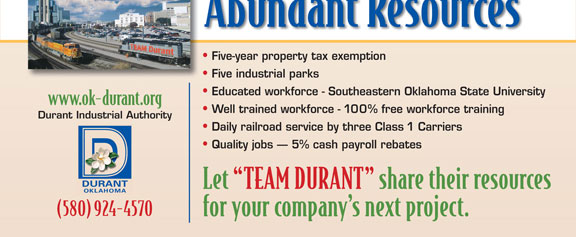
egun in the 1950s, the Interstate Highway System forever changed the economic landscape of the United States. Getting a handle on just how big an impact Interstates represent, however, is a bit elusive, and depends on how you measure.
A flurry of studies by the Federal Highway Administration (FHWA) tackles the challenge from a number of angles. A 2002 FHWA report uses data on the transportation and warehousing industry sector.

That study showed the sector’s revenue at more than US$382 billion, payroll at nearly $116 billion and the total number of employees at 3,650,859. On a “smaller” scale, the I-95 Corridor Coalition, a collection of public and private entities along the entire length of the Interstate, claims that I-95 alone represents $4.5 trillion to the U.S. economy, along with 37 percent of all U.S. jobs.
A glance around the country turns up a host of initiatives and organizations – usually regional partnerships that cross governmental jurisdictions – all focused on corridors. Their sizes, configurations, and strategies vary, but their common goal is to enhance mobility and economic growth.
In Oregon, the Portland Development Corporation has formed the Interstate Corridor Urban Renewal Area to spur mixed-use development and create jobs along a section of I-5, while many miles south of Portland, the Economic Alliance of the San Fernando Valley in California has developed a strategic plan for another piece of I-5.
Along Interstate 215, which runs from Riverside to Temecula, Calif., government officials and leaders from public and private institutions have formed a coalition that meets in annual summits. In Virginia, the Southeast Fairfax Development Corporation (SFDC) seeks to maximize the potential of a corridor that runs alongside I-95 in Fairfax County.
The SFDC represents an answer to the challenge presented when the Interstate system supplanted the nation’s prior commercial corridors, including, in this case, the storied U.S. 1 that runs from Maine to Florida. The Richmond Highway, SFDC’s section of U.S. 1, has evolved as a complement to I-95.
Lara Fritts, who for three years directed the SFDC, recognized the need to adapt to the reality on the ground. The Richmond Highway could be part of the I-95 corridor environment, but couldn’t be I-95.
“Our land values were too high to attract logistics companies,” Fritts says, “so we became a community corridor,” meaning that the businesses there populate mixed-use facilities, as well as address the needs of visitors to a new hospital at the local military installation and tourists.
Now, as the new Director of Economic Development for Cudahy, Wis., a suburb of Milwaukee, Fritts’ jurisdiction is part of an I-94 corridor. She expects to shift focus to include logistics companies, and, much like the other initiatives named above, Fritts envisions regional partnerships as vital to success.
“We’ll accomplish so much more if we work together and don’t pillage each other’s territory,” she says, “although there will be friendly competition too, because we ultimately all have to protect the interests of our communities.”
Mark Sweeney, senior principal of site consulting firm McCallum Sweeney, acknowledges that communities generally know what they have with Interstates, and adequately develop and promote them. But he also offers up some finer points on corridors from the perspective of firms shopping for sites.
“We work with clients to determine if they really need an Interstate,” he says. “We generally define the location criteria as ‘limited access four-lane highway.'”
For office projects, he focuses on commuter access, which may or may not include Interstates.
“We look for choke points to see how they impact the labor draw,” he says. For industrial projects (manufacturing and distribution), he scrutinizes regional and national access, which always includes Interstates.
Sweeney notes that some states build limited access four-lane highways that function like Interstates, but often fail to market them sufficiently. As a result, his firm maintains its own GIS database of four-lane highways.
Once the appropriate type of road access is determined, Sweeney also considers a long checklist of factors that include capacity and congestion; weather-related closings; roadway conditions; interchange effectiveness; access to and from the Interstate; presence of tolls; alternative routes (important for just-in-time sensitive projects); queuing space at any and all interchanges along the access route; and distance to links with Interstates on an axis perpendicular to the road at hand.
Additionally, Sweeney says it’s also important to look at a community’s plans for the future.
“If they can’t show a concrete plan for improvement, then you know it’s going to be a minimum of five years before anything is approved,” he says.
All of this attention to detail is warranted, Sweeney contends, because for logistics companies, reliability of shipments is critical.
“Distribution executives of retail firms tell us that customers do not return if a store is out of product on two store visits,” he said. “They don’t even get three strikes.”
Mark Farmer is Research Manager in the Economic Development Department of the Gwinnett Chamber of Commerce in northeast Atlanta, Ga.
Site Selection Online – The magazine of Corporate Real Estate Strategy and Area Economic Development.
©2009 Conway Data, Inc. All rights reserved. SiteNet data is from many sources and not warranted to be accurate or current.
Related Articles
Out With the New
Axeing plans for a glitzy new airport was merely the opening act for Mexico’s new socialist president.
Hale & Hearty
Missouri’s bioscience and health innovation companies are leading the way to life saving research and scientific advancements.
Portfolio Management Migrates to the Web
Fast Track Project Management WorkPlaceUSA (www.workplace-usa.com), a Dallas-based provider of project management and other real estate services, is using an Internet-based project management system from Citadon (www.citadon.com), San Francisco, to facilitate the simultaneous creation of 13 network information centers for WorldCom. The $900 million effort involves building 12 centers totaling 1.3 million sq. ft. (120,700 […]
Power Surge
Energy is big business in Eddy County, N.M., the busiest community currently drilling in the oil-and-gas-rich Permian Basin.
Top Locations for Sustainable Development
Green is as green does in these leading territories.

